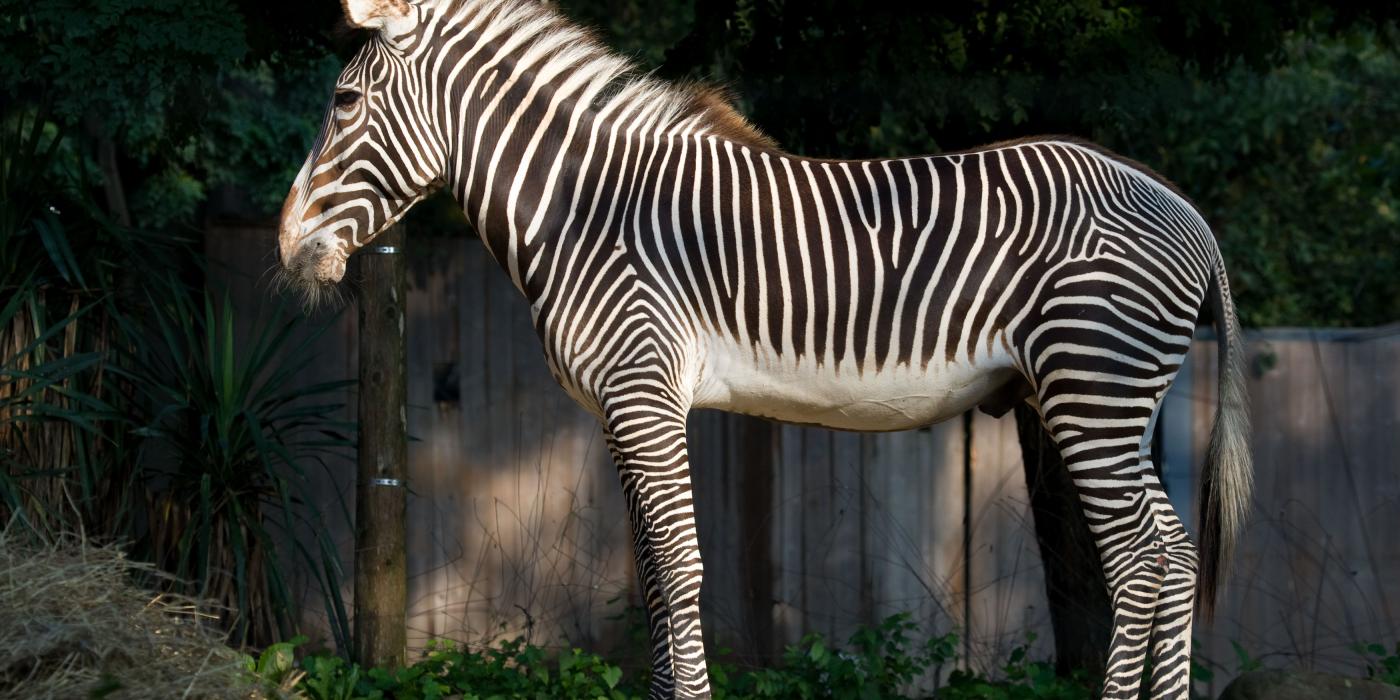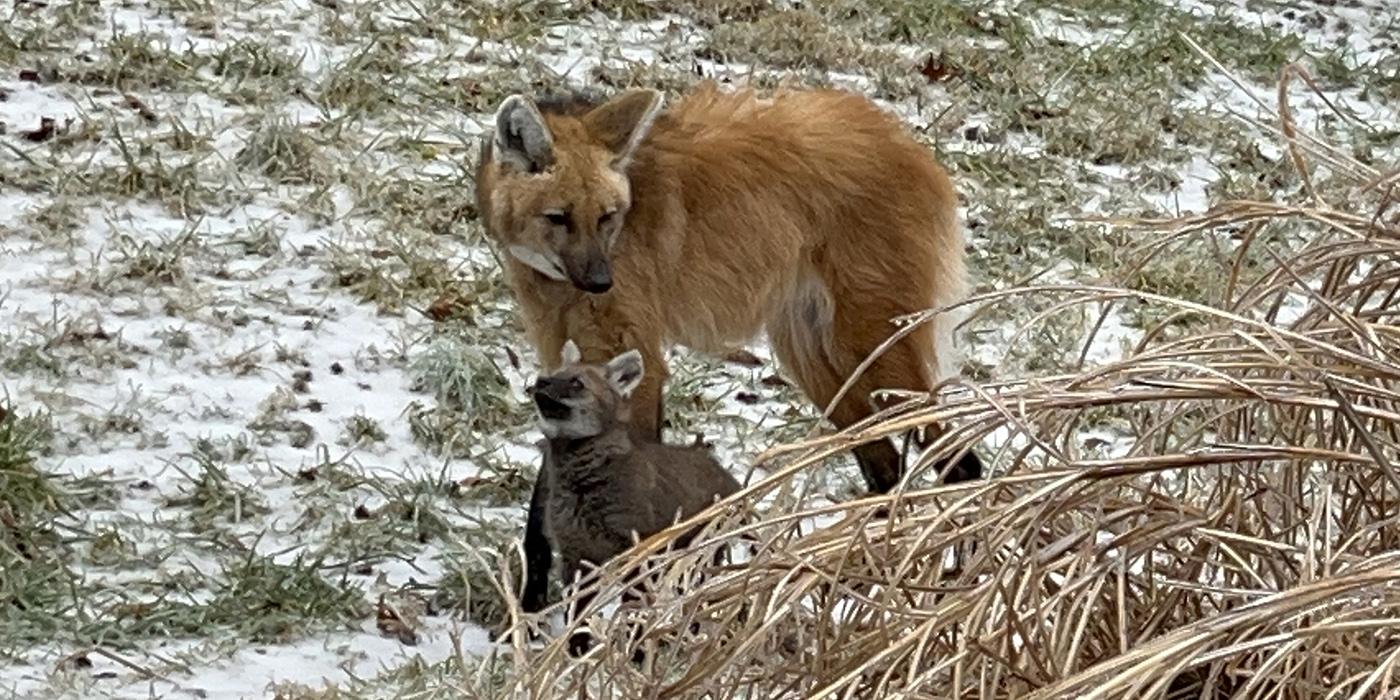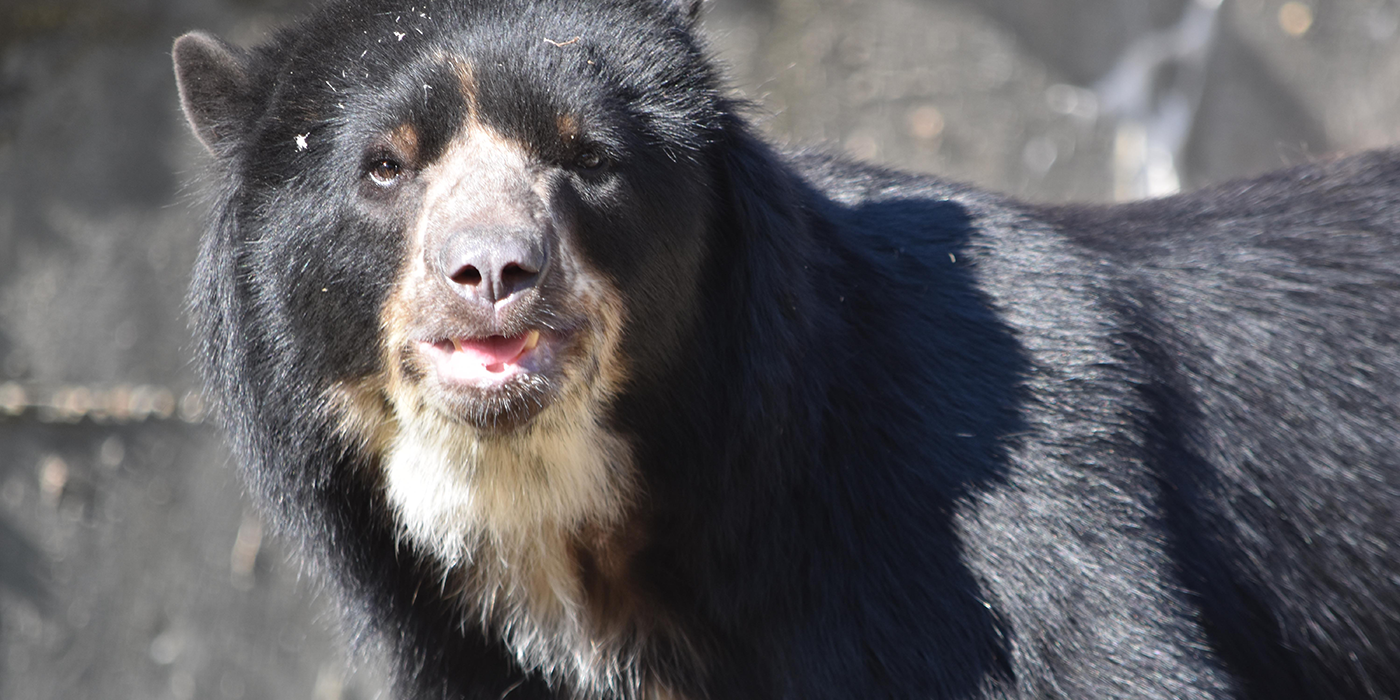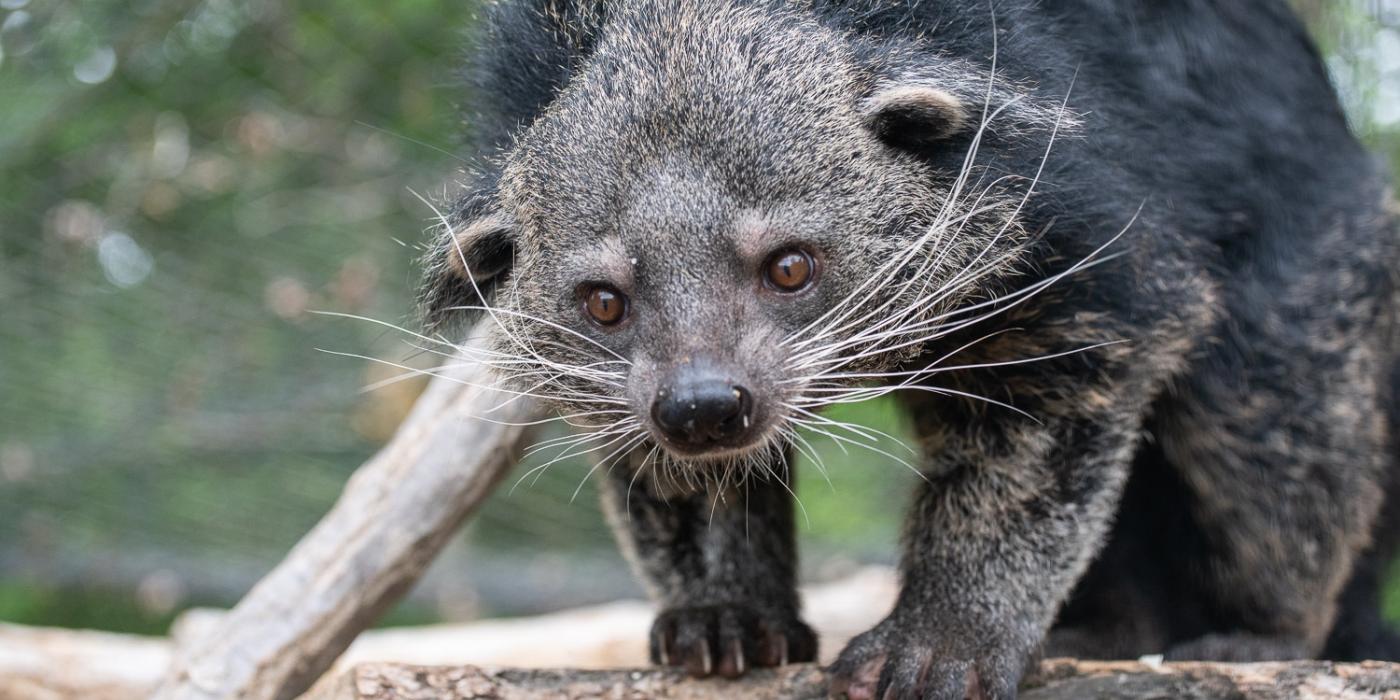How Do You Train a Zebra?
How do you get an elephant to exercise, safely introduce two songbirds or prepare a cheetah for a veterinary exam? In this series, get an insider’s look at how animal keepers use activities, food, training and toys to care for the Smithsonian’s National Zoo’s animals. Find out how enrichment stimulates the senses, why training builds trust, and how keepers come up with new ways for animals to explore and use their natural behaviors each day.
As an animal keeper at Cheetah Conservation Station, I care for a diverse group of African species, including cheetahs, red river hogs, Ruppell’s griffon vultures, a variety of antelope and a 12-year-old Grevy’s zebra named Moyo.
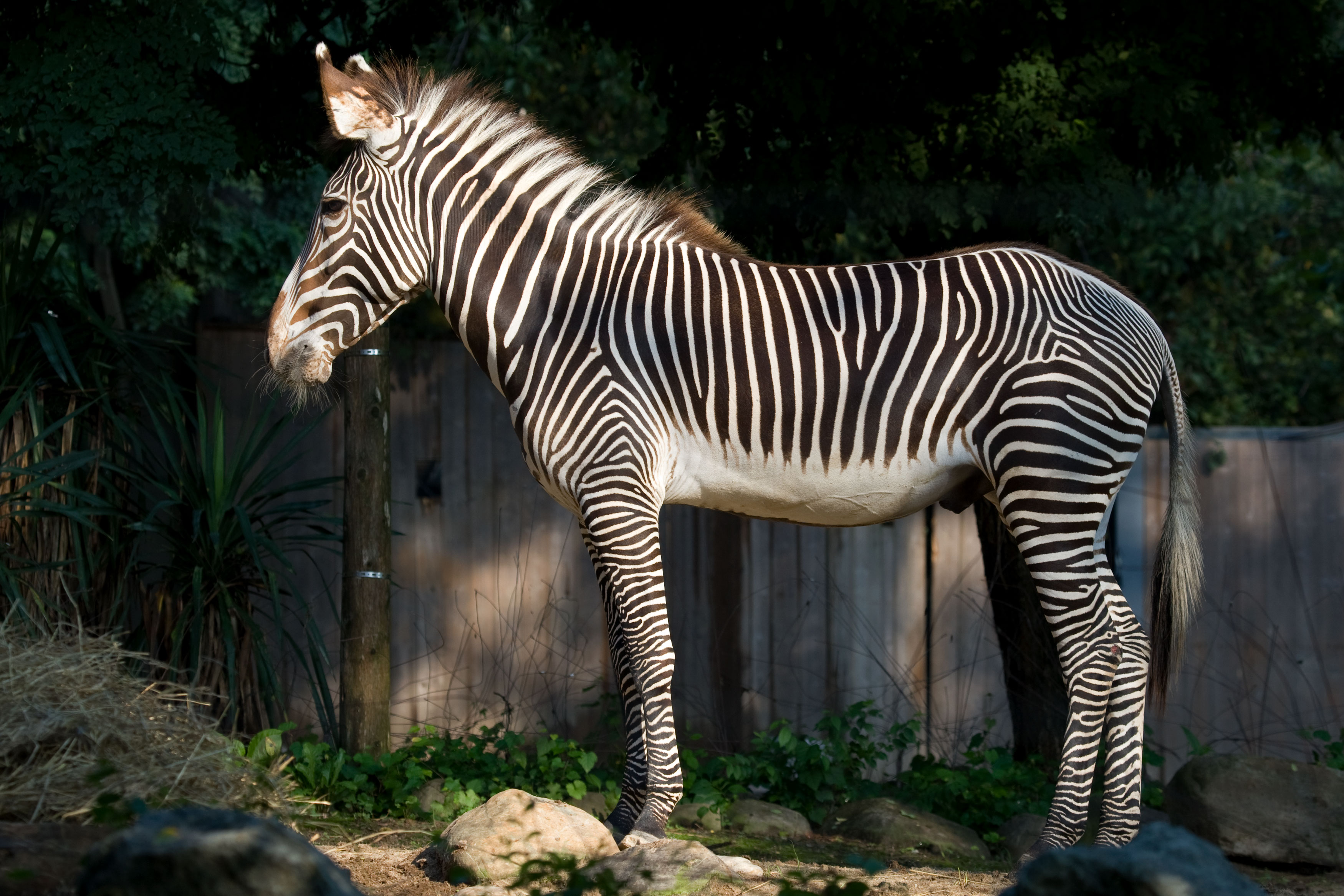
If you see Moyo interreacting with his cheetah neighbors, don’t worry. Adult zebras are much too large and strong to be typical cheetah prey. The cheetahs instinctually recognize this, and so does Moyo! He sometimes runs their shared fence line brandishing a big, scary hay tub in his mouth, which sends the easily intimidated cheetahs running.
Unlike other zebras, Grevy’s stallions are territorial. They use their size and muscle to fight other males that challenge them for space and resources. Despite having never lived in the wild, Moyo also maintains the instincts of a prey animal ready to defend against lions, hyenas or crocodiles. His wide, upright ears swivel independently to help him listen to his surroundings, and he can be easily startled by unexpected sights and sounds.
Although Moyo is generally polite, we know that his temperament could change unexpectedly. In human care, male Grevy’s zebras sometimes turn their natural aggression toward people. He could also accidentally hurt us if he got spooked and ran or kicked. So how do we safely care for an 850-pound zebra? By incorporating training into his everyday routine, we can look after Moyo without ever having to enter his enclosure while he is inside.
Moyo is easy to spot with brown and white stripes all the way down to his hooves and a spiky, mohawk-style mane. As a member of the equid (or horse) family, he sounds like his donkey and wild ass relatives — which usually leaves visitors trying to guess what animal they are hearing. His loud, guttural bray is a jarring greeting for the keeper team at 6:30 a.m., but it’s a way for Moyo to assert himself.
We train Moyo using positive reinforcement, a type of operant conditioning where we pair desired behaviors with rewards. When we ask Moyo to do something, he can choose to participate, knowing he will be rewarded. If he doesn’t want to participate, he doesn’t have to. This type of training gives Moyo opportunities to make choices throughout his day and helps him build a positive relationship with his keepers. The simple behaviors he learns can assist us with his daily care.
Training sessions are often a way for animals to work for something they want but may not need. The treat portion of Moyo’s diet is a bonus. We still give him hay and grain every day, even if he doesn’t want to participate in a training session. Zoo nutritionists formulate Moyo’s diet and recommend healthy items that we can use as training rewards (and how much he can have in a day). For Moyo, a typical reward is hay, grain, apple chunks or his favorite herbivore biscuits.
I may have had a nibble of an herbivore biscuit myself to see what all the excitement was about. Stale, bland cereal is probably the best comparison I can make. While I was unimpressed, Moyo seems to think they are tasty, which is great because sticking to his diet is very important.
Early in the morning, we ask Moyo to voluntarily leave his exhibit yard and wait inside the heated barn. Then, we can safely go into the yard to make sure it has everything he needs for the day. Many of our animals are taught to come to an off-exhibit location when they hear a specific sound. We use the term “recall” for this behavior.
Zoo animals hear human voices throughout the day. They may not notice when we call their names, so we choose a sound that stands out that they can learn to recognize as their recall sound. For Moyo, that sound is a cowbell.
He has learned that when keepers ring his bell, it’s time to move into the barn where fresh grain is waiting. Moyo really values the grain portion of his diet, so we began by placing grain in the barn and ringing the bell each time he entered to look for it. He quickly learned that each day when the bell rang there would be grain waiting for him in the same spot — his reward for participating in the recall behavior.
We use the time that Moyo is inside the barn stall to clean his habitat, make sure the perimeter fence is intact, and prepare the yard with hay and fresh water. Moyo, like his wild counterparts, spends much of his day grazing. So, once he is done with his grain, we ask him to head back out on exhibit for the day where he knows the staple of his diet, hay, is waiting. We recall Moyo again in the evening for some more grain and toys, while keepers add hay to his yard so he can spend time in the barn and outside overnight.
On weekends when the weather is nice, visitors can catch a 2 p.m. Meet a Zebra demonstration to learn about Grevy’s zebras and see Moyo training. Moyo isn’t very comfortable in a crowd, but he has learned a targeting behavior that increases his confidence around groups of people. We ask Moyo to approach the fence and touch his nose to a buoy. If he participates, he gets a treat.
This simple, low-energy behavior can boost an animal’s confidence in an uncertain situation, because they know where their keeper wants them to go, what they are expected to do, and of course, that there are treats! This is a great training technique to use with animals that we can’t share a space with for safety reasons. We can ask Moyo to move around his exhibit or behind the scenes by simply asking him to follow the target.
To teach this, we start by pairing a treat with a sound that connects the behavior with the reward. We call that sound a “bridge.” It is usually clear and short, like a whistle or a word. Our bridge for Moyo is a clicker, which makes a clicking sound when we press it. After tossing a few treats and “bridging,” an animal usually makes the positive association between the sound and the reward. Once they make that connection, we use the bridge to let them know exactly when they have done a behavior that we want them to repeat (like Moyo touching his nose to a buoy, click!). We call this "capturing" a behavior.
Think about the way that an animal naturally investigates something new. A zebra, like many animals, will approach an object and sniff it with its nose.
This is what we expected Moyo to do when we showed him a target buoy for the first time. When he touched it with his nose to sniff it, we used our bridge (the clicker) and gave him a reward. Timing is the most important part of capturing a behavior, so you can communicate to an animal exactly what they did to earn a reward — and what they can do to earn it in the future. With a few repetitions, Moyo quickly learned that touching his nose to the target buoy each time it’s placed on the fence will earn him a treat.
Targeting is a great tool that we can use to train other behaviors, too. Weight can be an indicator of an animal’s health and body condition, but you can’t just pick up a zebra and place him on a scale. Moyo has to put himself on the scale, and just as important, he has to want to. Stepping onto a platform that feels and sounds unfamiliar was not something Moyo initially wanted to do. When asking an animal to do something that scares them, it is important to slowly build their confidence and keep the experience positive. It’s also important that the animal has a well-established relationship with their keeper. That trust allows them to feel safer.
Because Moyo has such a positive relationship with his main keeper, Deb Grupenhoff, she was able to build his confidence over time. He first learned to follow his target around the scale, and then onto it. Finally, he learned to stop with all four feet placed on the scale. Eventually, Moyo learned that the scale is not dangerous, and he is rewarded with treats each time he is weighed. He does not even need his target anymore.
These husbandry training sessions allow Moyo to voluntarily participate in his daily care. Deb continues to work with him on new behaviors. He is currently learning to “hold,” or stay still and wait. She also introduces new objects and toys to help build Moyo’s confidence and keep him physically and mentally stimulated. Moyo means “heart” in Swahili, so the next time you see him at the Zoo, look for the heart-shaped stripe on his chest that earned him his name.
Want to help replenish toys, puzzle feeders and training tools that are a bit run-down yet well loved by the Zoo’s animals? Donate to the Enrichment Trunk. Your support directly benefits the animals at the Smithsonian’s National Zoo and Conservation Biology Institute.
Related Species:

